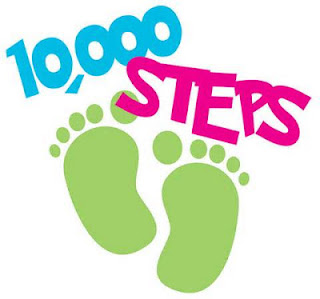One Step At a Time...
You Can Go Meatless
For All Three Meals
The USDA
recommends five to nine servings per day of vegetables and fruits,
and that doesn't include French fries. Many people don't grow out of
their childhood habit of hating vegetables, but summer is a perfect
time to try and make those valuable veggies taste great. Farmers'
markets are in full swing and carry the tastiest varieties of
produce, so pick some up and start experimenting. Many people don't
like vegetables because they buy them at the grocery store, where the
long process of harvesting, shipping and then sitting at the store
has leached flavor out of them. Try eating the babies - baby carrots
(the ones with the greens still attached, not the small version of
larger carrots bagged up in the store), artichokes, squashes and
turnips are more tender and flavorful than their grown-up
counterparts. Fat is fabulous for livening up veggies' flavor -- try
a sprinkle of an infused oil, butter or cheese.
And
dipping veggies keeps the fat count lower than pouring it on. If you
want to include cruciferous veggies - - and all their fabulous health
benefits - try blanching. Steam them for 60 seconds, then plunge into
a cold-water bath to stop the cooking and prevent bitter flavors they
tend to develop. If you tend to eat a lot of sweets, then include
sweet vegetables, like sweet potatoes, squash and peas, to indulge
your sweet tooth. And if all else fails, fry thin slices of hardy
veggies like carrots, zucchini and squash. Even parsnips can be
delicious when fried. Shave them thin with a knife or mandolin, dunk
them in hot vegetable oil quickly, drain and sprinkle with kosher
salt. Find a way to enjoy veggies and reap their health benefits.
Healthy
Meatless Recipe:
Cheesy
Vegetable Stuffed Eggplant
(Adapted
from Chef Meg of SparkPeople)
Ingredients:
- 2 small eggplants *
- 1 tbsp olive oil
- 1 onion, finely chopped
- 1 garlic clove, peeled and minced
- 1 small zucchini, chopped
- Pinch of black pepper
- 1⁄2 cup tomato sauce
- 1 cup low-sodium petite diced canned
- tomatoes (or 4 plum [Roma] tomatoes, peeled, deseeded, and diced)
- 1⁄2 teaspoon dried thyme
- 1 tsp dried basil
- 1 cup shredded Monterey Jack cheese
- 4 tbsp grated Parmesan cheese
Directions:
1.
Preheat oven to 375° F. Prepare a baking pan
with
nonstick cooking spray.
2.
Trim the stems from the eggplant, and cut
them
in half lengthwise. Cut the pulp from the
center
of each half, leaving about 1⁄2-inch shell
of
flesh.
3.
Cube the eggplant pulp into 1⁄2-inch pieces.
Place
a large sauté pan over moderate heat,
then
add the oil. Once the oil is hot, add the
onion,
garlic, zucchini, black pepper, and the
cubed
eggplant. Cook, stirring until very tender,
about
5 to 7 minutes. Add the tomato sauce,
tomatoes,
thyme, and basil; and heat through.
4.
Lightly spray the cut edges of the eggplant
with
nonstick cooking spray, then spoon one quarter
of
the vegetable mixture into each shell.
Top
each eggplant with one-fourth of the Monterey
Jack
and Parmesan.
5.
Place the stuffed eggplants in the prepared
baking
pan and bake until the eggplant is hot
and
the cheese is bubbly, 20 to 25 minutes.
*
Use small
eggplants of about 1⁄2 pound
each
if you can. The larger the eggplant, the
more
bitter it will be. The small, thin Japanese
eggplants
would also work well here.
Enjoy
and Bon Appetit!
Healthy
Motivator:
Get
Up and Go
10,000
steps a day (roughly 5 miles and 500 calories)—this is what the
Surgeon General recommends all healthy adults accomplish on an
average day. The good news is that you can generate these steps
through regular daily activities in addition to an exercise routine.
However, given the current activity level of most Americans, it’s a
very lofty goal. The average sedentary individual walks only 1,000 to
3,000 steps a day (www.thewalkingsite.com).
Therefore, instead of thinking about 10,000 steps, consider
increasing your daily activity level and the number of steps you
take.
Those
who spend most of the day behind a desk may be able to add extra
steps with a little advanced planning. In addition to taking the
stairs, parking in the back of the parking lot, and walking to your
coworkers’ offices, consider forming a walking group with your
colleagues. Not only will this give you an opportunity to get out and
exercise, it also will give you the chance to get to know your
coworkers in a non-work environment. Another plus is that you can
keep each other accountable for the daily walks. There is no excuse
when you have others waiting for you. Groups could meet before work,
at lunchtime, or right after work and walk different routes around
your office.
Getting
in 10,000 steps a day will take a bit of work on your part, but by
just making the effort to walk more, you will be able to reach that
goal in no time.
Have a great week everyone and remember a better tomorrow starts with what you eat today!
Do you have a favorite meatless recipe you would like to share with us? Send it my way!
Wishing you health and wellness from the inside out,
Lisa
LQ WELLNESS
Professional Wellness Coach
973-383-0955
lisaquinnwc@embarqmail.com
Make sure to follow me on Twitter @lq_wellness
Like me on Facebook
Follow me on Pinterest
"Eat
Food. Not too much. Mostly plants"
~
Michael Pollan ~









